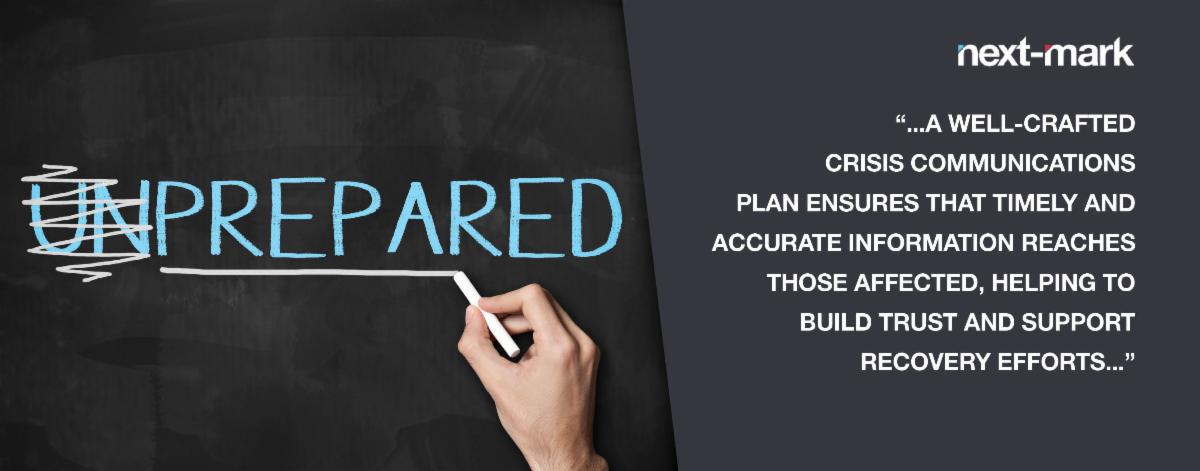
A Crisis Communications Plan Can Save Lives
With communities across the nation still reeling from the unprecedented impacts of Hurricanes Helene and Milton, it’s a sobering reminder of the vital need to have plans in place to easily and effectively communicate with your clients, citizens, constituents, residents, and more.
Local, state, and national governments have established crisis communication strategies ready to active in response to such deadly storms, which tragically have wreaked havoc across multiple states in just three weeks. It’s essential for you to have similar preparations in place.
A well-crafted plan ensures that timely and accurate information reaches those affected, helping to build trust and support recovery efforts. It also builds confidence in your brand, strengthens connections, and most importantly, saves lives.
Here are some important elements to consider when developing or enhancing your crisis communication strategy
Assemble Your Team
Start by forming a dedicated crisis communication team tasked with monitoring situations, developing messages, and responding swiftly to emerging challenges. This team should be comprised of individuals with diverse skill-sets, including public relations, crisis management and media communications, to ensure a comprehensive approach to handling crises. By establishing clear roles and responsibilities, the team can operate efficiently, allowing for quick decision-making and effective communication both internally and externally.
Identify Clear Objectives
Next, define specific goals for your crisis communication strategy. Key objectives include ensuring public safety by disseminating critical information, providing timely updates to keep the community informed, and maintaining transparency to build trust. Clearly outlining these objectives helps prioritize actions, streamline communication efforts, and ensure that all messages align with your overarching goals during a crisis.
Focus on Target Audiences and Message Consistency
Identify who needs to receive information—such as clients, citizens, employees, and stakeholders—and tailor messages to their specific needs. By understanding the unique concerns and preferences of each group, you can enhance engagement and ensure clarity. Additionally, ensure key messages are consistent across all channels to avoid confusion and misinformation, which can undermine trust and response efforts.
Understand which Communication Channels Reach Your Desired Audience
Establish multiple platforms for disseminating information, including social media, websites, email alerts, and local media, to effectively reach your audiences. By utilizing a diverse array of channels, you can ensure that critical updates are accessible to various demographics and preferences, maximizing engagement and information retention.
Social media allows for real-time updates and interactive communication, while websites serve as a central hub for detailed information. Email alerts can provide direct and timely notifications to subscribers, and local media can amplify messages to reach those who may not be online. And, sometimes, communicating face-to-face can be the most impactful of all.
Remember: HOAs Can Also Serve as Primary Emergency Communicators
HOAs are essential for community safety during emergencies, acting as the primary communicators for residents. They quickly disseminate important information about disasters and coordinate with local agencies. They can also organize preparedness initiatives, manage resource distribution during crises, and provide support and information for recovery efforts. By serving as a vital link between residents and emergency services, HOAs help keep communities informed and ready to respond effectively in times of need.
Don’t Forget Empathy and Emotional Support
Recognize feelings of fear and anxiety. Encourage community support, open dialogue, and share coping strategies. This approach fosters understanding and empowerment during challenging times. Also, and maybe most importantly, don’t forget to follow up. We should care about each other at all times, not just during a crisis.
Take Time To Do A Post-Crisis Review
Let these two catastrophic storms be continual reminders of the importance of crisis communication and the role your brand or organization plays in the lives of your stakeholders.
Preparation, identification, and response are the key components to a successful crisis communications plan. It’s vital to build your team and plans well in advance because just like preparing your home for a crisis, these steps need to be taken NOW not when a crisis strikes.
The Next-Mark team has extensive experience managing crises for clients. Let us help you create a crisis communications plan so you have one less thing to worry about when an issue arises. Connect with us!
At Next-Mark, we have curated numerous client brand stories since 2005. If we can help, please contact us at 941.544.2765 or at info@next-mark.com.